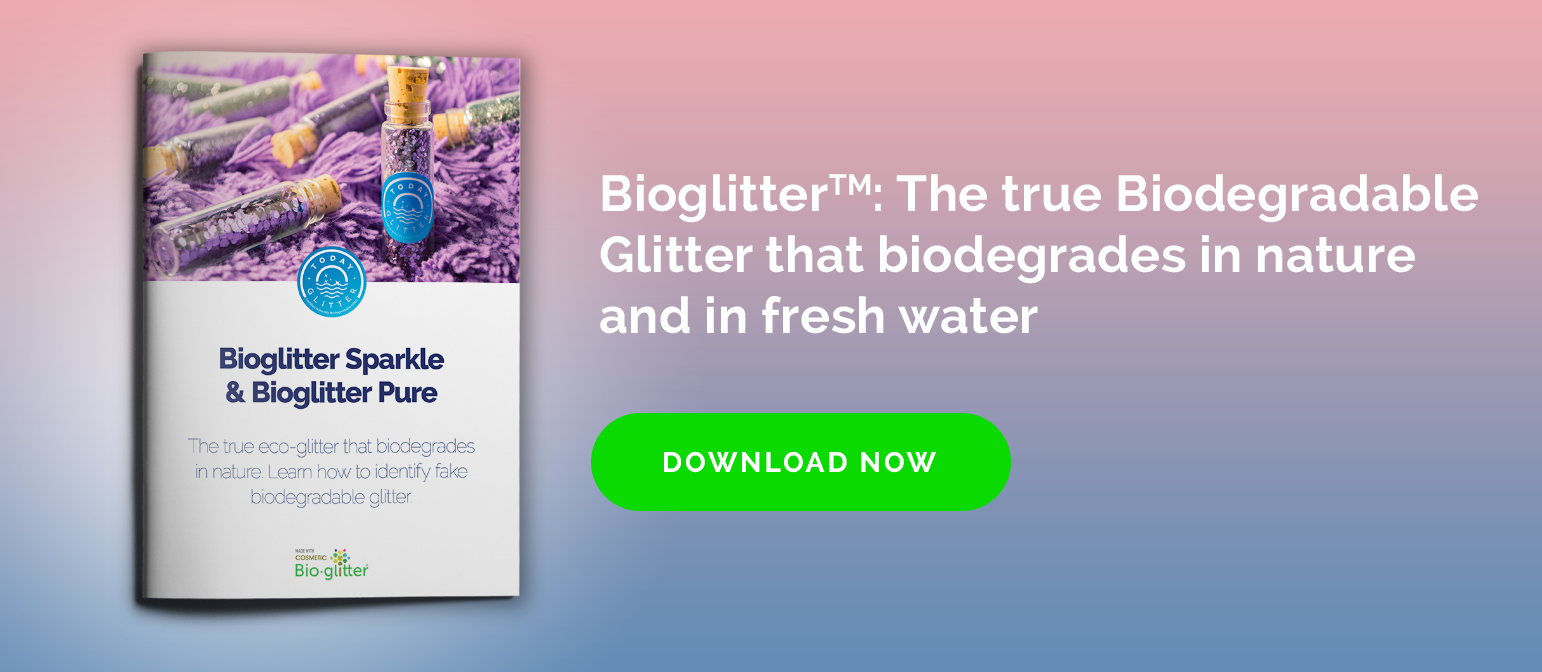Environmentally Safe Glitter – Bioglitter FAQ
We are seeing an increasing demand of biodegradable products and of course glitter lovers also wanted their naturally biodegradable sparkle. But the new plastic free glitter launched by Bioglitter also raises some fair questions from skeptical consumers who do not know if all that buzz is for a good reason. Let’s find out!
As the concern for the environment is also reaching the cosmetics industry, the need for an environmentally safe glitter could not wait anymore. But with all new product comes the doubts and hesitations from buyers who still do not know if getting this glitter is the right option. Here all their questions will be answered and we will give you a detailed explanation of what Bioglitter really is about.
So What Is Bioglitter?
Bioglitter is an environmentally safe glitter made with a unique biodegradable film that does not contain genetically modified materials, it was developed to be a sustainable alternative to traditional plastic based glitter and understanding it is time for a non-plastic eco-glitter. It offers almost the same benefits as conventional glitter, but without hurting the planet.
-
It is primarily made from eucalyptus hardwoods sourced from responsible plantations operating in accordance with the PEFC standards.
-
It uses a special biodegradable film that has excellent eco-credentials as it is biodegradable in all environments.
-
Although it is not holographic (holographic glitters do not biodegrade in nature), it has a soft focus iridescent effect.
When Is Bioglitter Biodegradable?
Bioglitter biodegrades when heat, water and oxygen are present, they allow microorganisms to exist who will digest glitter to transform it into carbon dioxide, water and biomass. Bioglitter does not biodegrade on the shelf or dissolve in water. Biodegradation starts only in a compost, soil or waste-water environment where microorganisms exist.
What Standards Support Bioglitter?
The following official standards are used to test the compostability of a material: European (EN13432) and American (ASTM D6400) standards. But the ISO standard (ISO 17088:2012(en)) also allows harmonization in other countries. Four parts are tested:
-
Material classification: including heavy metals
-
Eco-toxicity: to make sure no toxic material is produced
-
Biodegradation: to make sure if materials break down to carbon dioxide, water and biomass
-
Disintegration: to see if material physically breaks down into pieces. It should happen within 90 days and in more than 90% at residues of less than 2mm
How Long Does Bioglitter Take to Biodegrade?
It depends on the environmental conditions, just like a regular leaf: it does not take the same time to biodegrade in a swamp than in the desert. But it usually takes just 4 weeks for the majority of the product to degrade.
Other Yes and No Frequently Asked Questions
The following are quick questions conscious new consumers usually ask when they get Bioglitter:
Does Bioglitter use genetically modified organisms (GMOs)?
No, neither does its ingredients suppliers.
Is Bioglitter suitable for vegetarians or vegans?
Yes, it is.
Can you incinerate Bioglitter?
Yes, you can.
Does Bioglitter contain any of the 14 most common food allergens?
No, it does not.
Does Bioglitter contain nano particles?
No, it does not.
Does Bioglitter contain any carcinogenic, muyagenic or toxic ingredient?
No, it does not.
Does Bioglitter dissolve in sea water?
Yes, and it does so in accordance with the ASTM D7081-05 standard. However, this method was under scrutiny because of the difficulty to capture all marine environments (e.g. polar, Mediterranean, Caribbean) under one single test. For this reason we focus on the FRESHWATER biodegradation test.
Features of the Bioglitter products
Bioglitter SPARKLE
-
92% plastic free, but the goal is to remove the last bits of plastics
-
Independently tested by OWS Belgium and proven to be highly biodegradable
-
Made with a special modified regenerated cellulose technology that is unique to Bioglitter
-
It does not contain antimony or GMOs
-
It has a silky soft feel on skin compared to plastic based glitters
Bioglitter PURE
-
The first 100 % plastic free glitter in the industry
-
It holds the OK Biodegradable WATER certification by TÜV
-
Made with a special modified regenerated cellulose technology that is unique to Bioglitter
-
It does not contain antimony or GMOs
-
It has a silky soft feel on skin compared to plastic based glitters
-
It complies with all the micro-plastics legislation around the globe
-
It is a body safe glitter as it complies with FDA legislation and global cosmetics regulation


